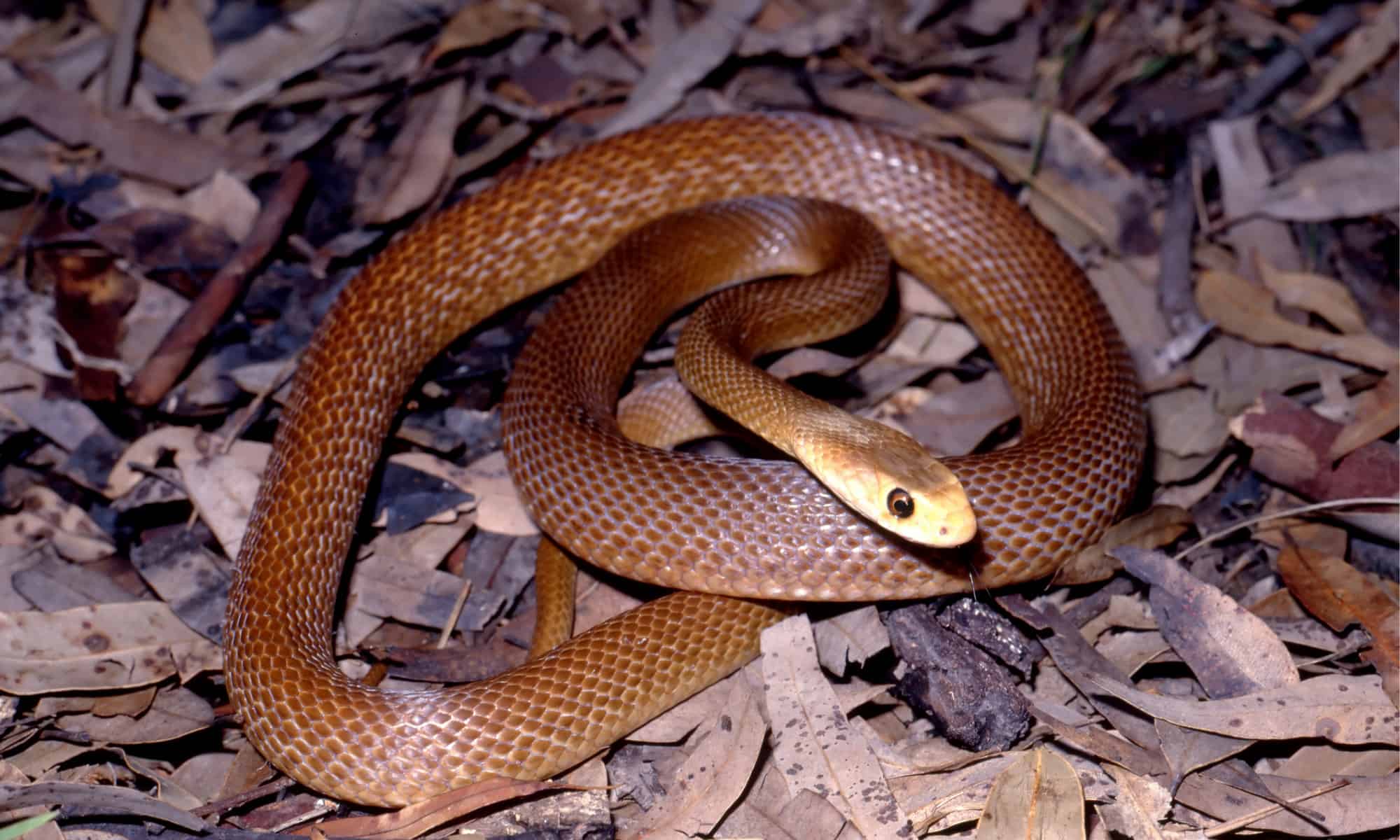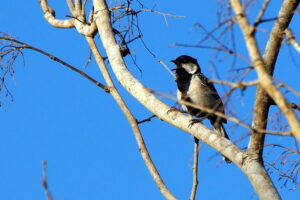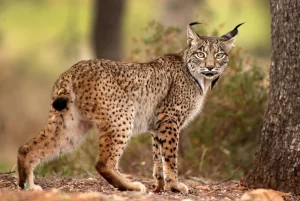In the vast wilderness of Australia, hidden among the dense coastal rainforests and swamps, lies an elusive predator that commands both respect and fear – the Coastal Taipan. Known as the world’s second most venomous land snake, this stealthy creature is a true master of its domain. With its sleek, muscular body and lethal venom, the Coastal Taipan is an apex predator, capable of taking down prey three times its size.
In this article, we will explore the fascinating world of the Coastal Taipan, learning about its behavioral patterns, hunting techniques, and the crucial role it plays in maintaining the delicate balance of Australia’s ecosystem. From its lightning-fast strikes to its uncanny ability to blend seamlessly into its surroundings, this extraordinary snake will leave you in awe of its prowess.
Join us as we delve deep into the secretive life of the Coastal Taipan and discover the remarkable adaptations that make it the silent and deadly predator of the Australian coast. So, brace yourself for an exhilarating journey into the world of the fatcai99 Coastal Taipan, as we unravel the mysteries surrounding this enigmatic creature.
Physical Characteristics and Habitat of the Coastal Taipan
The Coastal Taipan (Oxyuranus scutellatus) is a strikingly beautiful snake, characterized by its long, slender body that can reach lengths of up to 3 meters (approximately 10 feet). Its coloration varies from light brown to dark olive, often featuring bands of lighter shades that provide effective camouflage in its natural habitat. The snake’s head is distinctly narrow, with large eyes that offer keen vision, aiding its predatory skills in low-light conditions. This unique morphology not only enhances its agility but also makes it an efficient hunter.
Habitat plays a crucial role in the Coastal Taipan’s survival. Primarily found along Australia’s northern and eastern coastlines, it prefers environments that provide both cover and opportunities for hunting. Coastal Taipans are commonly found in a variety of habitats, including mangroves, grasslands, and tropical rainforests. These diverse ecosystems offer ample shelter from predators and human activity while also serving as a rich source of prey. The snake is highly adaptable, often venturing into agricultural lands, making it a familiar yet feared presence in rural areas.
The Coastal Taipan is an adept climber and can often be seen basking on branches or rocks. This behavior not only aids in thermoregulation but also allows it to survey its surroundings for potential prey. Its preference for moist environments explains its affinity for coastal regions and riverbanks, where it can thrive. Unfortunately, habitat destruction due to urbanization and agriculture poses a significant threat to this species, leading to the need for conservation efforts to protect its natural environment.

Diet and Hunting Behavior
The Coastal Taipan’s diet primarily consists of small mammals, birds, and occasionally reptiles. Its preference for warm-blooded prey makes it particularly effective at hunting, as these animals are often more active during the day, which aligns with the Coastal Taipan’s own hunting patterns. Equipped with a remarkable sense of smell and excellent eyesight, this snake is capable of detecting prey from a considerable distance.
When it comes to hunting, the Coastal Taipan employs a combination of stealth and speed. It is known for its incredible agility, allowing it to strike swiftly and accurately. The hunting strategy typically involves the snake lying in wait, camouflaged within its surroundings, before launching a rapid strike at unsuspecting prey. This technique minimizes energy expenditure while maximizing the chances of a successful kill. Once it has struck, the Coastal Taipan uses its potent venom to immobilize its prey quickly, ensuring that it cannot escape.
The Coastal Taipan’s venom is not just a means of subduing its prey; it is a vital component of its hunting strategy. The venom contains neurotoxins that affect the nervous system, leading to paralysis and eventual death of the prey. This allows the snake to consume its meal without the risk of injury. The quick and efficient hunting techniques of the Coastal Taipan illustrate its status as a top predator in its ecosystem, showcasing the intricate balance of life in Australia’s natural world.
Venom and Danger
The Coastal Taipan is infamous for its highly toxic venom, which is considered one of the most potent of any snake species. Just a single bite can deliver a lethal dose of venom capable of killing an adult human in as little as 30 minutes if left untreated. The venom contains a complex mixture of neurotoxins, procoagulants, and other harmful compounds that work in tandem to disrupt the body’s normal functions. This potent cocktail is designed for quick immobilization of prey and can cause severe symptoms, including paralysis, respiratory failure, and internal bleeding.
Despite its fearsome reputation, the Coastal Taipan is typically non-aggressive towards humans and will often flee if given the chance. Most encounters occur when the snake is accidentally stepped on or cornered. Understanding its behavior is crucial for minimizing the risk of bites. Those who work or explore in areas where Coastal Taipans are prevalent should remain vigilant and take precautions, such as wearing boots and being aware of their surroundings.
Antivenom is available for those who are bitten, and immediate medical attention is essential in such cases. The development of effective antivenoms has significantly reduced the mortality rate associated with Coastal Taipan bites. However, education and awareness remain critical in preventing dangerous encounters with this snake. By respecting its territory and recognizing its role in the ecosystem, humans can coexist with this powerful predator while minimizing risks.
Reproduction and Life Cycle of the Coastal Taipan
The reproductive behavior of the Coastal Taipan is as intriguing as its hunting techniques. Mating typically occurs in the spring, when males engage in elaborate courtship displays to attract females. These displays may include wrestling matches, where males compete for the attention of a female, showcasing their strength and agility. Once a female selects a mate, the pair will copulate, and the female will later lay a clutch of eggs, usually containing between 10 to 20 eggs.
The incubation period for Coastal Taipan eggs lasts about two months, after which the hatchlings emerge fully formed and ready to fend for themselves. The juveniles are around 60 centimeters (about 2 feet) in length at birth, displaying a striking coloration that provides excellent camouflage in their environment. Despite their small size, these young snakes are born with venom that is just as potent as that of adult Coastal Taipans, allowing them to hunt effectively from a young age.
The life cycle of the Coastal Taipan is marked by a series of growth stages, from hatchling to adult. These snakes reach sexual maturity at around 2 to 3 years of age, depending on environmental conditions and availability of food. In the wild, Coastal Taipans can live for up to 10 years, though this lifespan can be significantly shortened due to various threats, including habitat loss and predation by larger animals. Understanding their reproductive habits and life cycle is essential for conservation efforts aimed at preserving this remarkable species.
Geographic Distribution
The Coastal Taipan is primarily found along the eastern coastline of Australia, with its range extending from northern Queensland to New South Wales. This distribution reflects the snake’s preference for warm, humid environments that provide ample opportunities for hunting. Coastal Taipans are particularly abundant in areas with dense vegetation, such as rainforests, swamps, and coastal heathlands, which serve as ideal habitats for stalking prey.
In addition to its presence in mainland Australia, the Coastal Taipan is also found in New Guinea and several surrounding islands. This geographic spread highlights the adaptability of the species to various ecosystems. However, despite its wide distribution, the Coastal Taipan is not uniformly common across its range. Local populations may be affected by habitat destruction, human encroachment, and other environmental pressures, leading to declines in certain areas.
Conservation efforts are crucial to ensure the survival of the Coastal Taipan across its geographic range. Protecting natural habitats, promoting awareness about the importance of this species, and implementing measures to mitigate human-snake interactions are essential steps in maintaining healthy populations. By understanding the geographic distribution and habitat preferences of the Coastal Taipan, conservationists can better strategize on how to protect this extraordinary predator.

Conservation Status and Threats
The Coastal Taipan is currently classified as “Least Concern” by the International Union for Conservation of Nature (IUCN). However, this status does not imply that the species is free from threats. Habitat destruction due to urbanization, agricultural expansion, and deforestation poses significant risks to its population. As natural habitats are replaced by human developments, Coastal Taipans are forced into smaller, fragmented areas, leading to increased competition for resources and exposure to predators.
In addition to habitat loss, the Coastal Taipan faces threats from road mortality. As these snakes often inhabit areas close to human settlements, they are at risk of being struck by vehicles. Education and awareness campaigns aimed at local communities can help reduce these incidents by encouraging drivers to be cautious in areas known for snake activity. Furthermore, efforts to create wildlife corridors can improve connectivity between fragmented habitats, allowing Coastal Taipans to move safely between areas.
Conservation initiatives that focus on habitat preservation and restoration are essential for the continued survival of the Coastal Taipan. Collaborations between government agencies, non-profit organizations, and local communities can lead to more effective conservation strategies. By fostering a deeper understanding of the Coastal Taipan and its ecological significance, we can work collectively to protect this magnificent predator and ensure its place in Australia’s rich biodiversity.
Interesting Facts About the Coastal Taipan
The Coastal Taipan is a fascinating creature that boasts a variety of interesting facts. For example, despite being highly venomous, this snake is known for its remarkable speed. Coastal Taipans can reach speeds of up to 12 kilometers per hour (about 7.5 miles per hour) when moving, making them one of the fastest snakes in the world. This incredible speed not only aids in hunting but also helps the snake escape potential threats.
Another intriguing aspect of the Coastal Taipan is its defensive behavior. When threatened, the snake may adopt a striking pose, raising its head and flattening its neck, which can make it appear larger than it actually is. This display serves as a warning to potential predators, indicating that it is ready to defend itself. Interestingly, the Coastal Taipan is also known to hiss loudly when agitated, further deterring threats.
In terms of its ecological role, the Coastal Taipan serves as a crucial regulator of the populations of its prey species. By keeping populations of small mammals and birds in check, it helps maintain the balance within its ecosystem. This role underscores the importance of preserving not only the Coastal Taipan but also the intricate web of life in which it exists.
Case Studies and Encounters
Encounters with the Coastal Taipan often evoke a mix of fear and fascination. Many people who live in close proximity to coastal regions have shared their stories of unexpected encounters with this elusive snake. For instance, there are numerous reports of Coastal Taipans being spotted basking in the sun on rural properties, startling homeowners who may not have been aware of their presence. These encounters highlight the importance of educating the public about these snakes and their behavior, as well as promoting coexistence strategies.
In a notable case, a wildlife rescue organization was called to a suburban area where a Coastal Taipan had taken refuge in a backyard. The snake had wandered into a residential area in search of food, highlighting the impact of habitat encroachment on wildlife. Rescuers safely relocated the snake back to its natural habitat, emphasizing the need for compassion and understanding when dealing with native wildlife. Such encounters serve as a reminder of the delicate balance between human development and wildlife habitats.
Research studies have also contributed to our understanding of Coastal Taipan behavior and ecology. For example, scientists have conducted field studies to monitor their movements and habitat preferences, providing valuable data that can inform conservation efforts. These studies not only enhance our knowledge of the Coastal Taipan but also help raise awareness about the importance of protecting this incredible species and its habitat.

Conclusion: Appreciating the Unique Nature
The Coastal Taipan is a remarkable predator that embodies the beauty and complexity of Australia’s natural world. Its physical characteristics, hunting prowess, and ecological significance make it a fascinating subject of study. By appreciating the unique nature of this snake, we can foster a greater understanding of the delicate balance within ecosystems and the importance of conservation efforts. If you like reading this article then please consider visiting thecadillachotel to read more article like this.









